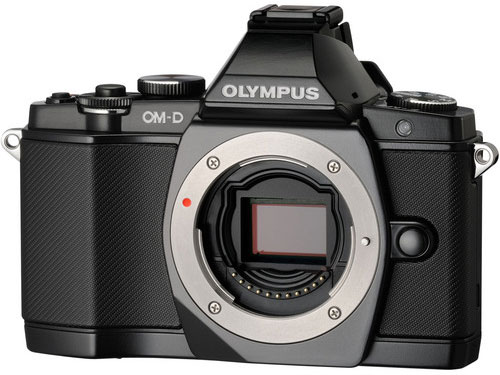EXCERPT page containing first few paragraphs. 2024-04-24 04:42:06
UA_SEARCH_BOT_compatible_botmozilla/5.0 applewebkit/537.36 (khtml, like gecko; compatible; claudebot/1.0; +claudebot@anthropic.com) @ 3.145.2.184
For full access, subscribe here. Or click title to login. ![]()
Sensor Size and Resolution
The E-M5 sensor is reportedly manufactured by Sony, but one should not make assumptions about sensor quality simply by manufacturer— many factors are involved in 'sensor image quality', including the quality of the electronics needed to make images from the sensor.
The 4/3 size sensor allows the design and construction of higher performance lenses than is otherwise possible with larger sensors. This is a real advantage over APS-C and full-frame cameras, but it does limit resolution and noise characteristics. Still, with a few more years, 4/3" sensor technology should improve.
Sensor size vs Sony NEX-7
Let’s compare the sensor size and resolution of the E-M5 and the Sony NEX-7 sensor.
The NEX-7 sensor is 63% larger. The pixel pitch of the E-M5 is 266 lp/mm vs 255 lp/mm for the Sony NEX-7, about a 4.3% difference (linearly), or about 8.8% in area. Hence, everything being equal, we can expect slightly higher noise in the E-M5 sensor as compared to the Sony NEX-7.
Article continues for subscribers...
Diglloyd Guide to Mirrorless is by yearly subscription. Subscribe now for about 25 cents a day ($90/year).
BEST DEAL: get full access to ALL 8 PUBLICATIONS for only about 75 cents a day!
Diglloyd Guide to Mirrorless offers comprehensive integrated coverage of most APS-C and full frame mirrorless cameras and lenses.
Special emphasis is placed on Sony full-frame, including Sony lenses and the high performance Zeiss Batis and Zeiss Loxia lenses plus Rokinon/Samyang and others. Fujifilm X, Olympus and Panasonic M4/3, Sigma dp Merrill and dp/sd Quattro are also covered in depth. Years in the making, it offers a wealth of material for choosing and using a mirrorless camera.
- Make better images by learning how to get the best results right away. For example, the best way to set up your Sony camera.
- Save money by choosing the right lens for your needs the first time, particularly with the numerous lenses available for Sony.
- Make better images, a sort of “cheat sheet” saving yourself months or years of ad-hoc learning—best practices and how-to and processing parameters are discussed and shown.
- Jaw-dropping image quality found nowhere else utilizing Retina-grade images up to full camera resolution, plus large crops.
- Real world examples with insights found nowhere else. Make sharper images just by understanding lens behavior you won’t read about elsewhere.
- Aperture series from wide open through stopped down, showing the full range of lens performance and bokeh.
- Optical quality analysis of field curvature, focus shift, sharpness, flare, distortion, and performance in the field.
Want a preview? Click on any page below to see an excerpt as well as extensive blog coverage, for example on Sony.


